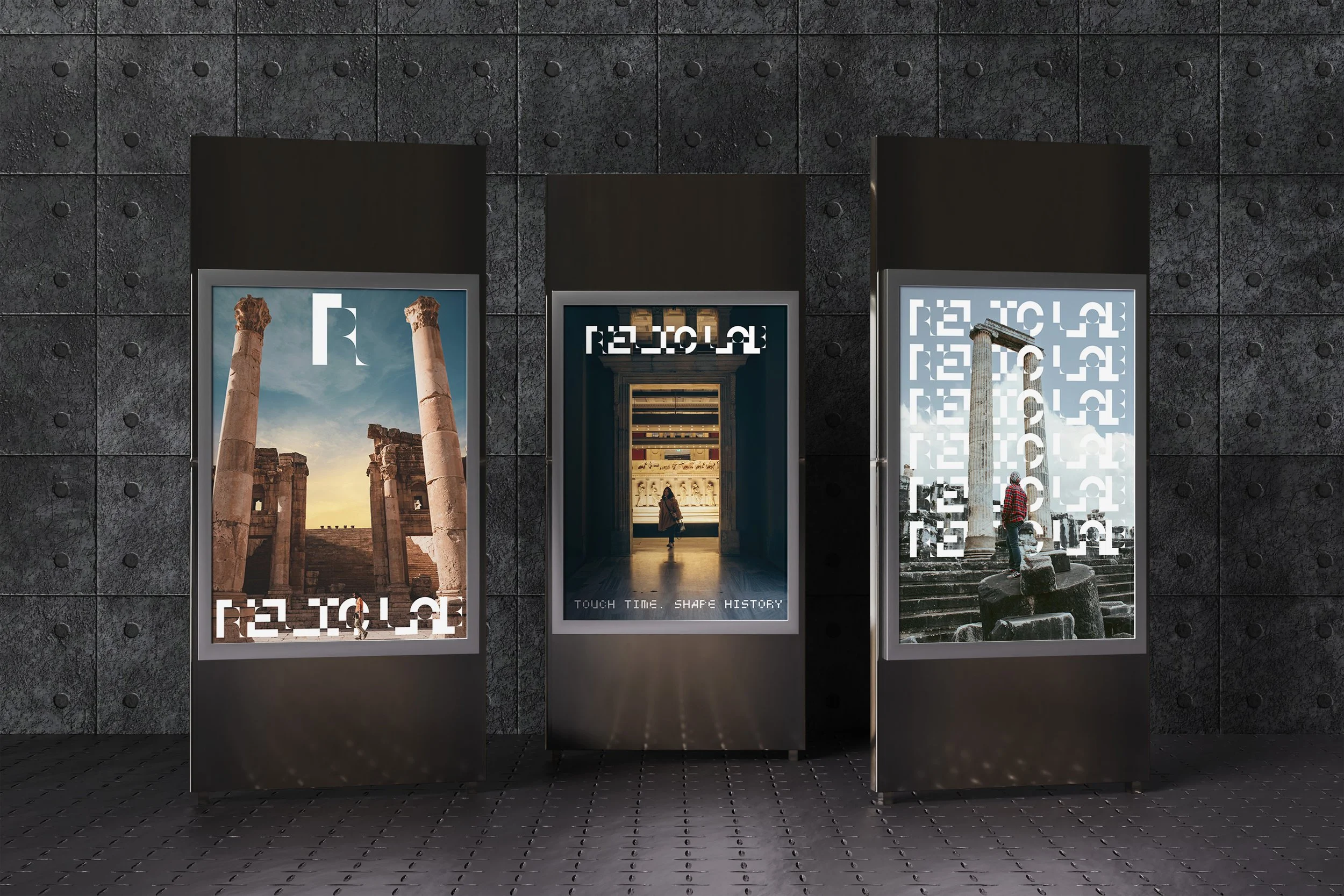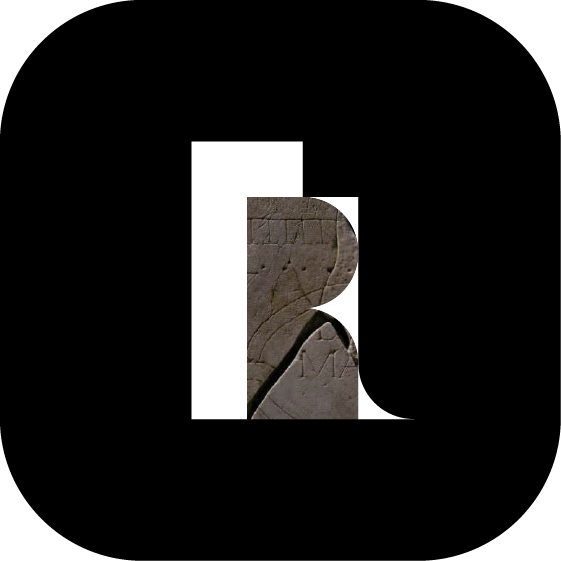
Relic Lab – Visual System for Cultural Access
Project Type:
I wasn’t interested in replacing museum visits or traditional preservation, but rather in imagining how digital interaction might invite more people to experience, restore, and connect with fragile heritage remotely.
The project proposes a shared, participatory model of restoration—where users can interact with incomplete relics, trigger reconstructions, and even co-own moments of cultural memory through visual systems and artifact-linked experiences.
Creative Direction, Visual Identity, Logotype Design, Interface Design, Motion Graphics, Interaction Concept, Digital Branding
The logo for Relic Lab is built using Diode A — a modular, pixel-like typeface composed of fragmented shapes. This visual quality echoes the concept of historical artifacts that exist in incomplete or damaged forms. The identity draws on this fragmented structure to represent the process of digitally restoring cultural objects, much like assembling a puzzle.
TwoLine B Hard is used as the secondary typeface to complement the logo’s visual logic while maintaining clarity across UI and print applications.
From signage to business cards, the logo system retains its modular structure while adapting to different scales and materials. The use of grey paper and pixel-like typography reinforces the concept of digital restoration — hinting at what is lost, revealed, and reconstructed.
The standalone “R” mark, shown above, combines the initial letter of “Relic” with the vertical stroke of “Lab,” forming a compressed symbol that reflects both parts of the name in one unified structure.

Each time a new artifact collection is featured, the inner form of the “R” logo is updated with an image of the highlighted relic. This creates a subtle but meaningful connection between the icon and the content — reminding users that what they’re accessing is always rooted in something real, historic, and worth revisiting.
Relic Lab Concept Trailer (TouchDesigner)
It reflects the core idea behind the project — that cultural artifacts aren’t static, but constantly shifting between material loss and digital reconstruction.
In the animation, a Buddha sculpture and a dragon censer dissolve and reform through particles, symbolizing how relics can be fragmented, reassembled, and re-experienced.
For me, this sequence represents not just transformation, but an invitation: to observe, participate, and imagine restoration as something interactive and ongoing.









